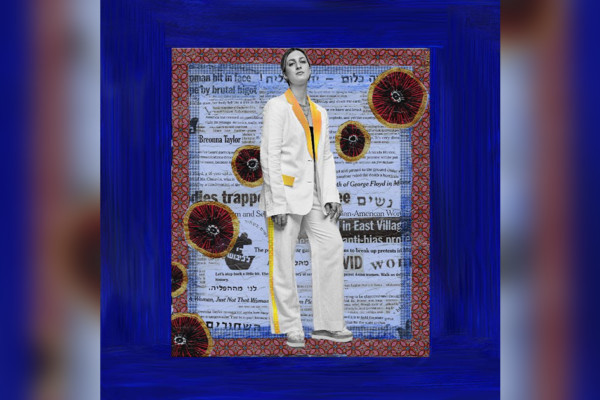Where We Stand: An Interview with Adi Meyerson
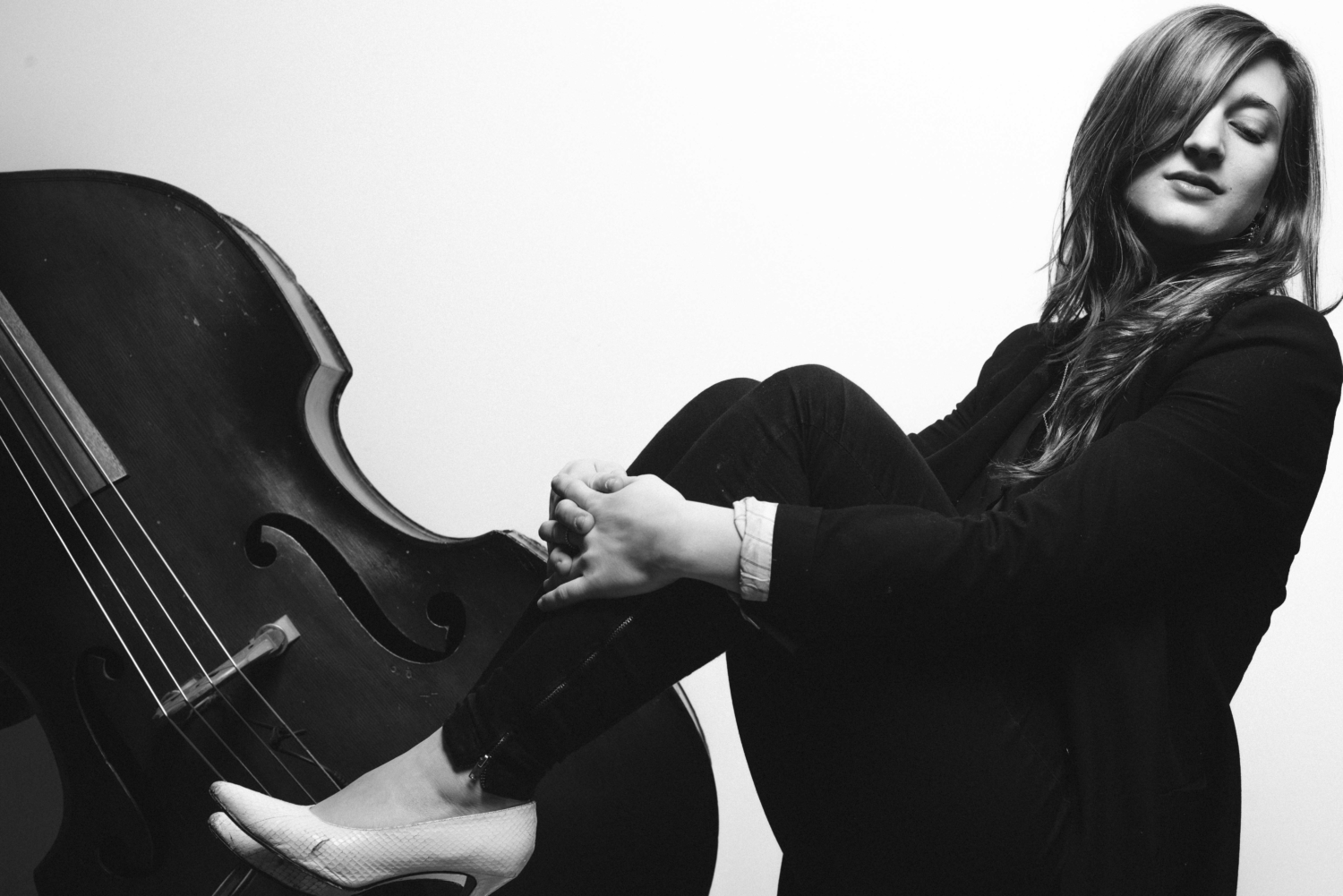
Bassist/composer Adi Meyerson has taken the opportunity of her debut album to take a musical snapshot of her life. Where We Stand is a testament to her time as a working bassist in New York City as well as our times.
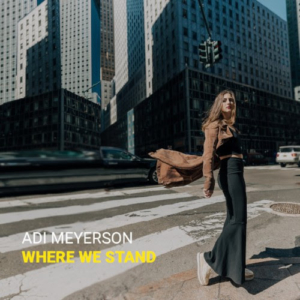 “Music is a way of telling one’s life story and that’s what I try to do every time I play and compose,” she explains.
“Music is a way of telling one’s life story and that’s what I try to do every time I play and compose,” she explains.
Although Meyerson’s prowess on the bass is evident, the album focuses on the compositions. Her holistic writing style allows her to focus on what we love to do as bass players: support. We caught up with Meyerson to get the scoop on her musical start, her writing influences, and tips for musicians heading to New York City. Where We Stand is available now through Amazon and iTunes.
I know you grew up in Israel, and I know there are so many great bassists from there – Avishai Cohen, Adam Ben Ezra, Or Lubianiker… What is it about Israel that makes great bassists?
I’ve had this conversation multiple times with multiple people. Everyone asks, “Why are Israeli musicians so good?” I don’t have one answer, but I personally had a really good teacher. We all had good teachers that implied this real love towards jazz and passion in playing music. The school system is very different there so we don’t have music in public schools like people do here. Any kid who goes to study music does it because they clearly want to do it. It comes from a different place, sometimes for the good and sometimes for the bad. Sometimes I wish I had started earlier with proper musical training in Elementary school. Once I decided to do it, it was totally on me so I had to put a lot more passion and practice time into it.
There’s a good scene. It seems there’s a great breeding grounds because they a lot of people leave to study in New York and then they come back and become teachers. There’s a lot of really great young players.
So the jazz scene is pretty vibrant?
It is. We have the Red Sea Jazz Festival, which is incredible. I would go to it every year. It was my highlight when I started listening to jazz at 17, and even before that. Before that, I didn’t really understand what the music was about, but I would go for the hang. My friends would take a bus and it was the best hang. It’s an outdoor festival that’s hot. As a student, you could buy a pass that gets you into every show you want. You’re just bouncing around these four stages with your friends and going to jam sessions late at night. Then you end up across from the beach at five o’clock in the morning so you take a little swim and go to sleep.
The older I got, the more I understood about the artists that were coming, it became the highlight of my year. I remember thinking, “Man, I wish my whole life was like this.” Then I moved to New York City and my whole life did become like a jazz festival. Every day I have to choose between what to see. There’s all this great stuff happening.
I did go to an arts high school. I started on electric bass when I was about 14 and then I transferred to the music department when I was 15. They would bring in a lot of cool people to do masterclasses. We would play together a lot, but not as much jazz.
Were you a rocker growing up?
I was into Guns N’ Roses. They were my first love and kind of what got me into rock. But then I was really into fusion like Weather Report, Victor Wooten, Marcus Miller, Alain Caron, and music like that.
How did you get turned onto that?
I think it was through my school. That’s what I thought jazz was at first because that’s what my teacher was into. He was more of a rock/fusion person so that’s what we were checking out. Me and my friends liked fusion but we also liked Guns N’ Roses and Iron Maiden and Dream Theater, so we’d play a lot of that stuff, too. At some point, someone gave me a Sonny Rollins record and I was like, “Oh, what is this?” It changed a lot of things for me. It was Sonny Rollins Plus 4 and Saxophone Colossus, those two albums. I was obsessed with it when I was 17 and 18.
On that early stuff, were you drawn to the bass or just the overall vibe?
I think it was the overall vibe but also the concept of swing – that feeling of real swing. I knew who Miles Davis was, I knew who John Coltrane was, and I knew who Charles Mingus was. But I think it might have been an age factor that made me connect to it then. It’s funny… All this fusion music that I loved in high school, I ended up hating it after that. Recently I’ve been coming back to it and enjoying it.
Did you become an acoustic purist?
A little bit at first. I tried to play what I was feeling and hearing on electric and try to swing like that. It didn’t work, so after high school, I picked up the upright. Then I moved to different cities and met this teacher that accepted me to his school. He gave me all these records to check out: Duke Ellington, Oscar Pettiford, and a bunch more. I guess you could say I was a bit of an acoustic purist at the time because the teachers around me but also from what I was listening to and the fact that I was trying so hard to learn this music. I get a little A.D.D. sometimes, so when I’m checking out something I have to just really check out that one thing. There’s so much that it’s so easy to get distracted. It always happens to me. I get into a black hole of YouTube and all the sudden it’s five in the morning and [I’m watching] something completely different [than what I started].
I was so passionate and excited about [acoustic jazz] that other things didn’t seem as exciting. Plus the bass players: Paul Chambers, Mingus, Oscar Pettiford, Jimmy Blanton and all those cats. All the sudden the bass was this whole other thing and I said, “I wanna do that.”
I was going to ask who your early bass people were. Did you have one player you wanted to be like?
I don’t think I ever wanted to be just like one person. Paul Chambers and Oscar Pettiford are my top “I want to be like you guys” people. I studied a lot of their music and solos. I still find myself going back to them because they’re just the truth. I did a lot of research about Jimmy Blanton because I discovered those duet recordings of him with Ellington so I transcribed a lot of that. The minute I heard Ahmad Jamal, it was over. Israel Crosby was my guy. I transcribed a lot of his stuff because I really liked his concept of space and melodic voice leading. The way he leads is like a Bach chorale. Those are my early influences, I’d say. Then came Ron Carter and Charlie Haden and Jimmy Garrison and George Duvivier. I found Mingus’s writing more than his playing as a huge influence on me. Mingus as a composer and a bass player/composer has always been something I look up to.
What kind of tips did you pick up from that?
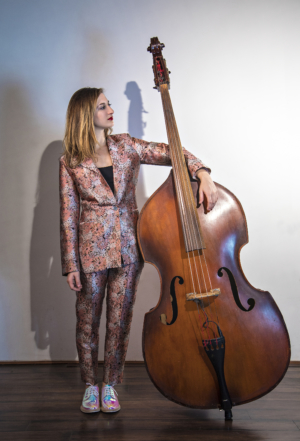 If you compare Mingus to Avishai Cohen, for example, the Mingus music is not always very bass centered. It’s not always playing the melody or cueing the music from the instrument in that sense. Avishai plays a lot of specific lines and melodies so it’s very upfront from a compositional standpoint. For Mingus, it was more overall. That’s more my style. Harmonically, Duke Ellington was one of his big influences and he’s one of mine, too. The way he writes for his band is really important.
If you compare Mingus to Avishai Cohen, for example, the Mingus music is not always very bass centered. It’s not always playing the melody or cueing the music from the instrument in that sense. Avishai plays a lot of specific lines and melodies so it’s very upfront from a compositional standpoint. For Mingus, it was more overall. That’s more my style. Harmonically, Duke Ellington was one of his big influences and he’s one of mine, too. The way he writes for his band is really important.
The fact that it’s my music and I’m playing bass in it doesn’t mean I have to always be playing the melody or be upfront musically. I think a really big thing for me as a bass player is to stop approaching it as “mine.” I found I was overplaying a lot because it was my music and I felt like I had to play my instrument to prove a point to myself or others, I guess. On a regular jazz gig with standards, I’d differently and play a lot more musically.
At first, when you present your own music, it’s very revealing. What if people don’t like it? What if it sucks? What if your ideas you thought worked on paper don’t work in real life? So I’d have a lot of doubts. I’d think, “Why am I playing my music when there’s so much other great music in the world?” Then I’d listen back to recordings of my songs and think, “Why am I playing like this? I want to hear more big notes.” At some point, I got comfortable with the material that the pressure was taken off. It’s mine no matter what. I wrote the song so I don’t have to overplay to prove it’s my music. I keep saying my music and yes I wrote it, but it’s not mine anymore once you put it out there. It just is.
As a jazz composer, I always think it’s interesting that you write a melody and changes, then the song is really up to the band members you call.
I’m very specific about the people I want in my band. I started playing with my own band and some of this material about two years ago. It took me a minute to figure out who brings the most out of the music. It’s very much a jazz record in that sense: it’s a tune. There’s a melody and a head and improvised solos. Some of the most thrilling parts of my job as a bass player is to comp behind somebody’s solo and go to these places with people. I don’t want to take that out of my music just because modern jazz has to sound a certain way. I do want to write some things that are a little more through-composed just to get another aspect, but I do like to keep it pretty open in that sense.
But it wasn’t like I went into the studio and said, “Let’s Just play.” I chose who would take certain solos and worked out how we would play the head and so on. It wasn’t like I just said, “You guys do whatever you want and it will sound good,” but I did choose people that like that kind of freedom and know how to deal with it. It allowed me to make something really cool. There’s a point when we play “Little Firefly” and the rhythm section all drops out on Joel Frahm’s solo. We weren’t planning, we just felt it. Then we somehow ended up in a fast 4/4 swing. That was the second take we did. Afterward, we all looked at each other and said, “Yeah. That’s the take.” You can’t recreate that. It was just one of those moments that happened in the music because of the freedom we had. We haven’t been able to recreate it on a gig yet.
Did you program the music a certain way for the flow?
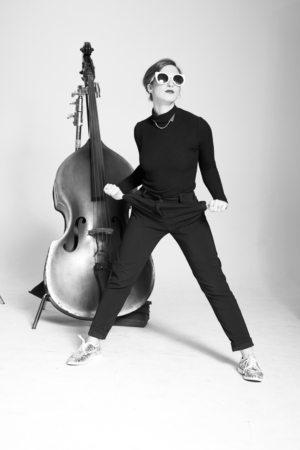 Not until later. In the studio we had one day so we just did it. Later when I was choosing song orders it took me a while. I was doing all these combinations to try to figure it out. Then I was on a plane and I thought, “Why am I not thinking about this like a vinyl record?” I’ve been listening to all this vinyl with a side A and a side B. After I thought of that, everything clicked. I brought it in for mastering a couple weeks after and my engineer approved. I’ve been really into vinyl the last year and a half, just enjoying the whole listening concept and feeling like I’m in the room.
Not until later. In the studio we had one day so we just did it. Later when I was choosing song orders it took me a while. I was doing all these combinations to try to figure it out. Then I was on a plane and I thought, “Why am I not thinking about this like a vinyl record?” I’ve been listening to all this vinyl with a side A and a side B. After I thought of that, everything clicked. I brought it in for mastering a couple weeks after and my engineer approved. I’ve been really into vinyl the last year and a half, just enjoying the whole listening concept and feeling like I’m in the room.
I’ve discovered so much cool music that I would never have gotten to just by picking up vinyl. I have this little tradition where every time I go out of time I buy some vinyl. Sometimes you’ll get these random things because the cover is cool or it’s only a dollar. I found this really weird Hank Jones with Oliver Nelson album. The weird thing is that Hank Jones is playing an electric harpsichord the whole time. The music is really, really cool, but it sounds so funny. That’s happened more than once. [Buying records] brings back the joy that we had buying CDs as kids. It puts another emphasis on album art because you judge it by the way it looks.
I love vinyl, but I didn’t want my album to sound like it was recorded in the ’60s. It’s not 100% a straight-ahead record. When I was doing the sound, I wasn’t trying to be old school about it. I didn’t want it to sound overproduced and dry, either. I think it came out very true to what I was trying to get to. It’s very “me” in that sense.
I really loved the track “Eunice.”
I wrote that right after I watched the Nina Simone documentary. Her birth name was Eunice. Something about her life story really inspired me to write a tune. I’ve always loved her and then learning about her life and what she went through and her dreams made me want to write a tune for her. It’s heavy, but it’s also very bluesy. She’s very rooted.
Speaking of that, I loved that you could just lay on the root through the song. It felt like an extended blues form.
I wanted to write something bluesy but a little dark and mystical. I wanted it to be rooted on one side and floating on the other. I’ve played it slower before or more shuffle-y before, but in the studio, we actually captured the vibe I was going for.
What advice do you have for people moving to New York?
Patience is key in this city. Not everything happens as fast as you want even though it’s a very fast-paced city. Stay focused and work towards your goal but don’t get discouraged if you’re the super famous rising star that someone else is because at the end of the day it’s not about that. You’re in this for the long run. Six years is enough time to see people switch off a lot. I’ve seen cats come here with a halo around them with the promise of being the next big thing. Some rise to the occasion and some completely fail. I’d also say come with a lot of money saved up. [laughs] New York is really expensive. There is work but a lot of times you’re going to end up doing $50 restaurant gigs and that won’t pay the gig.

